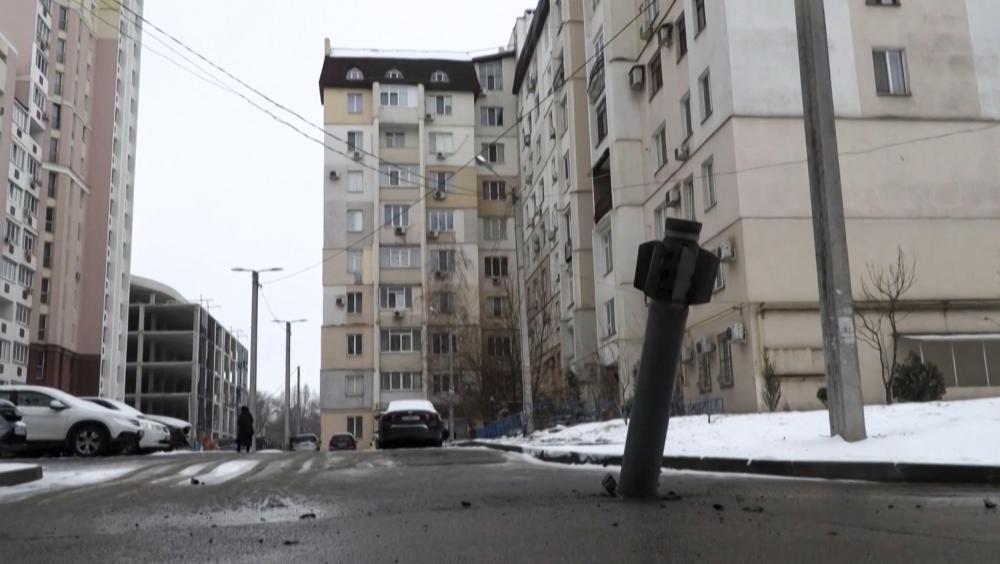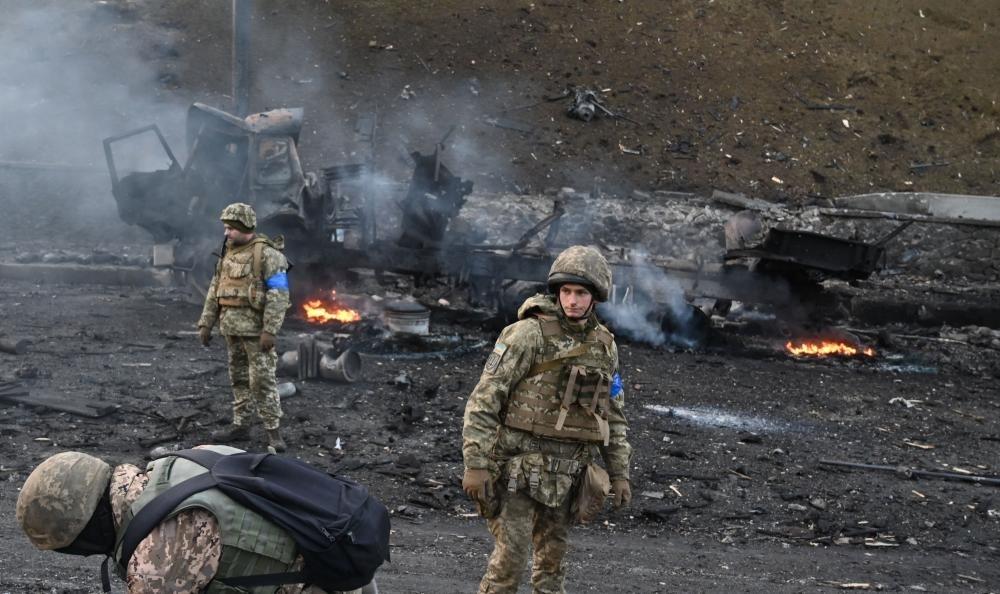The Russian-Ukrainian war brought lethal weapons back to the fore again, and created new and unusual political trends for a number of countries that became party to this war, at least in their political positions. Arms to war-torn Ukraine, and Moscow's partial exclusion from the "SWIFT" system for interbank money transfers, after it was criticized for its lenient response to Russia's launching of war on Ukraine. The decision to arm is a major political shift in Germany, which has been committed since the end of World War II Not to deliver “lethal” weapons to countries in conflict, despite previous exceptions that sparked controversy. Berlin authorized the delivery of 1,000 anti-tank missile launchers to Kyiv, 500 Stinger surface-to-air missiles, and “several” howitzers, according to the government announced. Operational In practice, the missile launchers will be delivered by the Netherlands, and the howitzers by Estonia. The two countries originally purchased this equipment from Germany and need Berlin's approval to be able to deliver it to Kiev. The howitzers are old, and were used by the army of the former communist East Germany. And Berlin wanted this move to respond to intense criticism it had been subjected to weeks ago for refusing to export such weapons. , whether from the Ukrainian authorities or from partners in the European Union such as the Baltic states and Poland. The traditional policy pursued by the largest European economy since the post-war period with regard to arms exports is caused by the horrors of Nazism, which generated a pacifism deeply rooted in German public opinion. But this position It has become less acceptable politically since the start of the war between Russia and Ukraine. In addition to the deadly weapons, the German government announced the shipment of 14 armored vehicles to Ukraine, in addition to 10 thousand tons of fuel that will be transported through Poland. Parallel steps Its reservations about excluding Russia from the “Swift” banking system, and Berlin has long refused to exclude Moscow from this major system in international finance for fear that it will be deprived of the supply of The idea revolves around the exclusion of Russian banks subject to European sanctions from this electronic platform through which a very large number of international transactions pass. The sanctioned banks represent 70% of the Russian banking market, according to the assessment of the Council of Europe. During his visit to Berlin, Polish Prime Minister Mateusz Morawiecki described Germany's position on excluding Russia from "Swift" as "selfish". The exclusion is considered a financial “nuclear weapon”, because separating a country from “SWIFT” also means depriving all banks from conducting transactions with the banks of the sanctioned country. Several other European countries that were hesitant about the step, such as Austria, Italy and Hungary, announced their willingness to accept the exclusion Russia from "Swift". Shipments from Canada. During the past week, Ukraine also received a plane full of "lethal military aid" from Canada. Canadian Defense Minister Anita Anand said on Twitter, "Our Canadian armed forces have delivered a second batch of shipments. Lethal military aid to support our Ukrainian partners.” Ukraine also recently received various shipments of military aid from the West, amid rising tensions on its border with Russia. It imposed additional sanctions on state-backed Russian banks and prevented any financial dealings with them. The Canadian move came after US President Joe Biden announced imposing sanctions on Moscow for "starting" the invasion of Ukraine, and Russian President Vladimir Putin's reference to his deployment of soldiers outside Russia's borders. Britain also announced And the European Union announced similar sanctions that will include Russian banks, “wealthy individuals,” and Russian lawmakers who supported recognizing the independence of the two separatist regions in eastern Ukraine. These weapons are worth $2.7 billion “to help strengthen Ukraine’s defense.” The United States had agreed a few days ago to proposals from Estonia, Latvia and Lithuania to send American-made weapons to the country. Ukraine, which includes anti-armor and anti-aircraft missiles. A video clip, published by the Pentagon on the 21st of last month, showed the loading of the aforementioned weapons to Kyiv, which include Javelin anti-tank missile systems as well as offensive munitions designed to destroy bunkers and light armored vehicles. Military analyst Vasily Kashin was He made it clear that the weapons that Washington sent to Kyiv bear a political character in the first place, to raise the morale of the authorities there, although they may contribute to some extent in raising the capabilities of the Ukrainian forces, and causing losses on the other side, but he indicated that sending these American weapons will not lead In any case, to a tangible superiority of the Ukrainian forces, due to the weakness and oldness of the air defense system, and all other weapons and ammunition available to it. There is no tangible change. In a media talk, Kachin stated that the nature of the weapons obtained by Kyiv could not significantly change the balance of power, and that Washington « It has not and will not provide weapons capable of dealing decisively with their Russian counterpart, for several reasons, foremost of which is the lack of confidence in Ukrainian institutions.” He explains that after the collapse of the Soviet Union, Ukraine turned into a It is an open arena for massive activity by foreign intelligence, especially Asian ones, adding that it is no longer a secret the size of military secrets and weapons models that were seized by Chinese, Iranian and North Korean intelligence, at different stages, especially in the nineties of the last century. A number of countries provided Ukraine with various military aid packages, between lethal weapons and defensive systems, which included Stinger missiles, Javelin anti-armor system, anti-missile platforms, light weapons, bombs, defensive ammunition and various military equipment. Military shipments to Ukraine to support and enhance its defense capabilities exceeded 17 Aircraft, with a total payload of 1500 tons. The shoulder-mounted Stinger missiles are well known air defense weapons in the Middle East, and they pose a major threat to warplanes and helicopters because of their ability to hunt these planes and being a serious nuisance to the Air Force. FIM-92 Stinger surface-to-air missile It is carried on the shoulder. Its guidance system is based on infrared radiation. Its manufacture dates back to the 1960s. Officially entered service in the US Army in 1981. The shoulder-mounted ROCKET measures 15.2 kg, is 1.52 meters long, and 70 millimeters in diameter, is powered by a solid-fuel propulsion system, hypersonic, can counter threats at low altitudes, with a range of up to 5 km, with a height of 4,800 meters, capable of destroying low-level aviation threats such as aircraft, helicopters, drones, and cruise missiles. In the last century. The Afghans used it to destroy about 270 Soviet aircraft and helicopters, the FGM-148 Javelin, an anti-armor missile system, which has been in service with the US Army since 1996. Many of the TOW wire-guided system or other long-range missiles The effective take-off range of Javelin is from 75 to 2500 meters Maximum firing range 4750 meters Maximum height 160 meters They are infrared guided missiles used in combat in Iraq, Afghanistan and Syria The command launch unit contains an advanced infrared sensor The missile is launched at Two cases: 1- When the target is exposed in front of it, it targets directly 2- When the target is behind a barrier, the missile flies past the barrier and falls on the target vertically. Weapons obtained by Ukraine. Light anti-tank missiles The second generation of NLAW anti-tank missiles, Swedish AT4 anti-armor and anti-tank missiles, LOW M72 anti-tank missiles. in Norway
< Previous PageNext Page >

